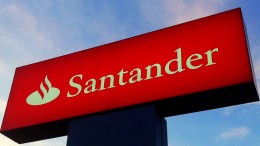Santander – 4Q15 Results: 24% underlying miss on higher provisions
BARCLAYS | Santander was just above breakeven in the quarter due to one offs and underlying earnings 25% light as a result of higher provisions and weaker costs. Negative one offs of €1,435m include €600m for PPI and €683m for intangible asset write offs. Even before this Santander’s Q4 earnings were 24% below expectations mainly due to higher provisions but also costs.










